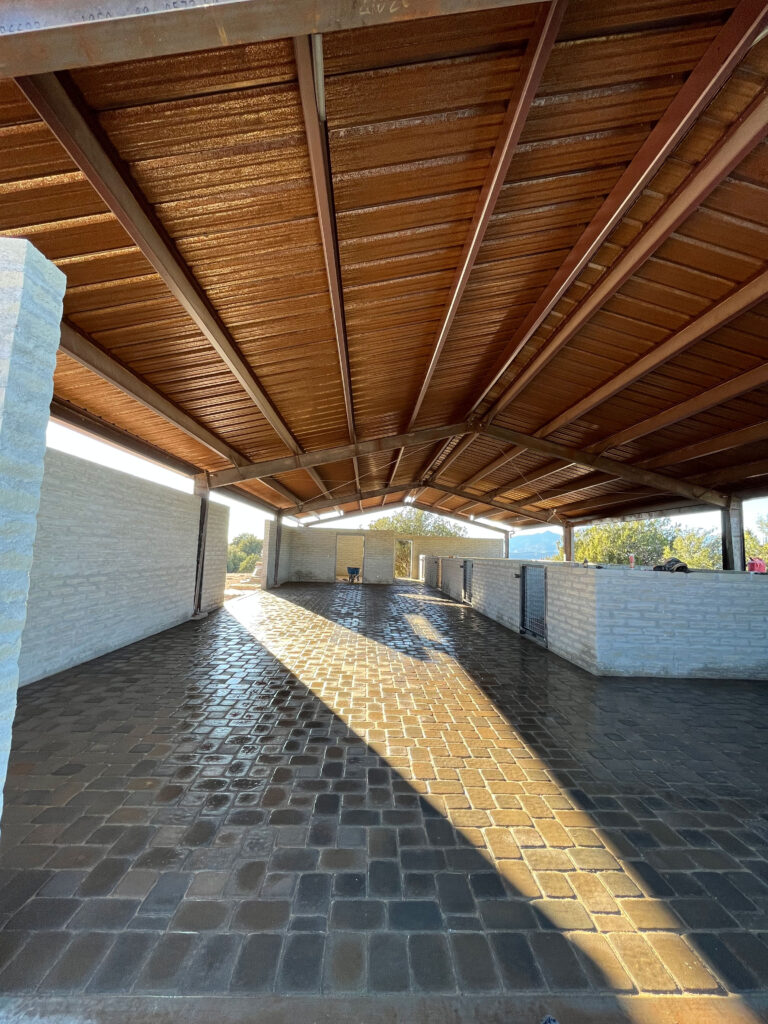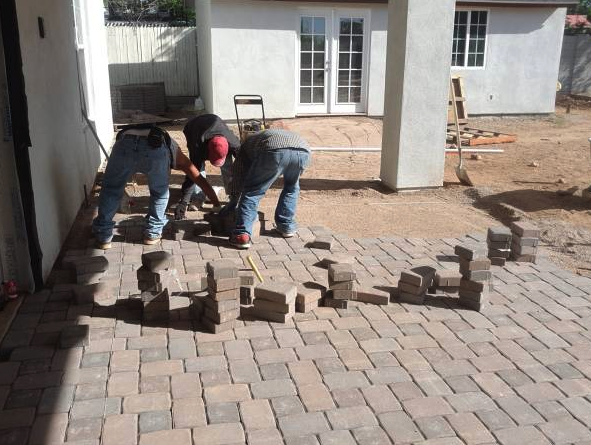Paver Patios in Denver, Colorado
A paver patio is more than just an outdoor space—it’s an extension of your home. At Denver Masonry Pros, we specialize in crafting beautiful, durable paver patios that enhance your property’s value and create the perfect spot for relaxation and entertaining.
Your dream patio is just one call away!
Transform Your Outdoor Space with Paver Patio Installation in Denver
Paver patios are the perfect combination of durability, design flexibility, and low maintenance, making them an ideal choice for Denver homeowners.
Key Benefits of Paver Patios
- Built to Last: Designed to withstand heavy foot traffic, Denver’s weather extremes, and everyday wear and tear.
- Customizable Designs: Choose from various colors, patterns, and materials to match your home’s aesthetic.
- Easy Maintenance: Resistant to stains and cracks—damaged pavers can be replaced individually without redoing the entire patio.
- Flexible & Expandable: Add features like fire pits, outdoor kitchens, or seating walls with ease.
- Eco-Friendly: Allows for proper drainage, reducing water runoff and soil erosion.

Paver Patios Installation
The installation of a paver patio involves several steps to ensure a stable and long-lasting structure. While it is possible to tackle this project as a DIY enthusiast, it is recommended to hire a professional contractor for larger or more complex installations. Here is a general outline of the installation process:
Step 1. Consultation & Design Planning:
We start with a personalized consultation to understand your vision, outdoor space, and budget.
- Discuss design ideas
- Assess site conditions
- Recommend materials and layout
Step 2. Site Preparation:
- Clearing: Remove grass, debris, or old patio materials.
- Excavation: Dig to the proper depth (6–8 inches) to create a solid foundation.
- Grading: Ensure proper slope for drainage to prevent water pooling.
Step 3. Base Preparation
We create a strong base using compacted crushed stone or gravel to support the pavers and improve drainage.
Step 4. Edge Restraints & Sand Layer
- Edge Restraints: Secure the pavers to prevent shifting over time.
- Sand Bed: Provides a level surface and allows for slight adjustments during installation.
Step 5. Paver Installation
- Consistent alignment
- Tight spacing for structural integrity
- Precision cuts for clean edges
Step 6. Finishing Touches
- Joint Sand: Lock pavers in place and prevent weed growth.
- Sealing (Optional): Protects against stains and enhances color vibrancy.

Custom Design Options for Your Paver Patio
Make Your Outdoor Space Uniquely Yours
No two patios are the same. We offer a wide range of design options to suit your style and outdoor space:
- Materials: Concrete, natural stone, brick, and more
- Patterns: Herringbone, basket weave, running bond, and custom designs
- Color Choices: Earth tones, bold contrasts, or natural finishes
Not sure where to start? We’ll help you choose the perfect design to match your home’s architecture.
Paver Patio Maintenance Made Simple
Maintenance Tips
- Regular Sweeping: Keeps debris from settling in joints.
- Occasional Washing: A quick rinse removes dirt and stains.
- Re-Sanding: Maintain joint stability every few years.
- Easy Repairs: Replace individual pavers without redoing the entire patio.
Pro Tip: Applying a sealant every few years can enhance color and protect against wear.
Why Choose Denver Masonry Pros?
At Denver Masonry Pros, we’re not just contractors—we’re craftsmen dedicated to bringing your outdoor vision to life
What Sets Us Apart:
- Expert Craftsmanship: Over a decade of experience in custom masonry projects.
- Tailored Designs: Every patio is custom-designed to match your style and space.
- Built to Last: We use premium materials and proven techniques for lasting results.
- Transparent Communication: No hidden fees—just honest, competitive pricing.
Get Your Custom Paver Patio Today!
Don’t settle for an ordinary outdoor space. Whether you’re looking to entertain guests, relax with family, or add value to your home, we’re here to make it happen.
📞 Call Denver Masonry Pros at 720-738-6240 or Request Your FREE Quote Now to get started!
⏰ Working Hours
Monday
Tuesday
Wednesday
Thursday
Friday
Saturday
Sunday
6:00AM – 8PM
6:00AM – 8PM
6:00AM – 8PM
6:00AM – 8PM
6:00AM – 8PM
6:00AM – 8PM
Closed
📍 Contact Us
Denver Masonry Pros
🗺️ Proudly serving Denver, Aurora, Lakewood, Golden, Littleton, Arvada, and surrounding areas within a 60-mile radius
📞 720-738-6240
💳 Payment Methods Accepted:
